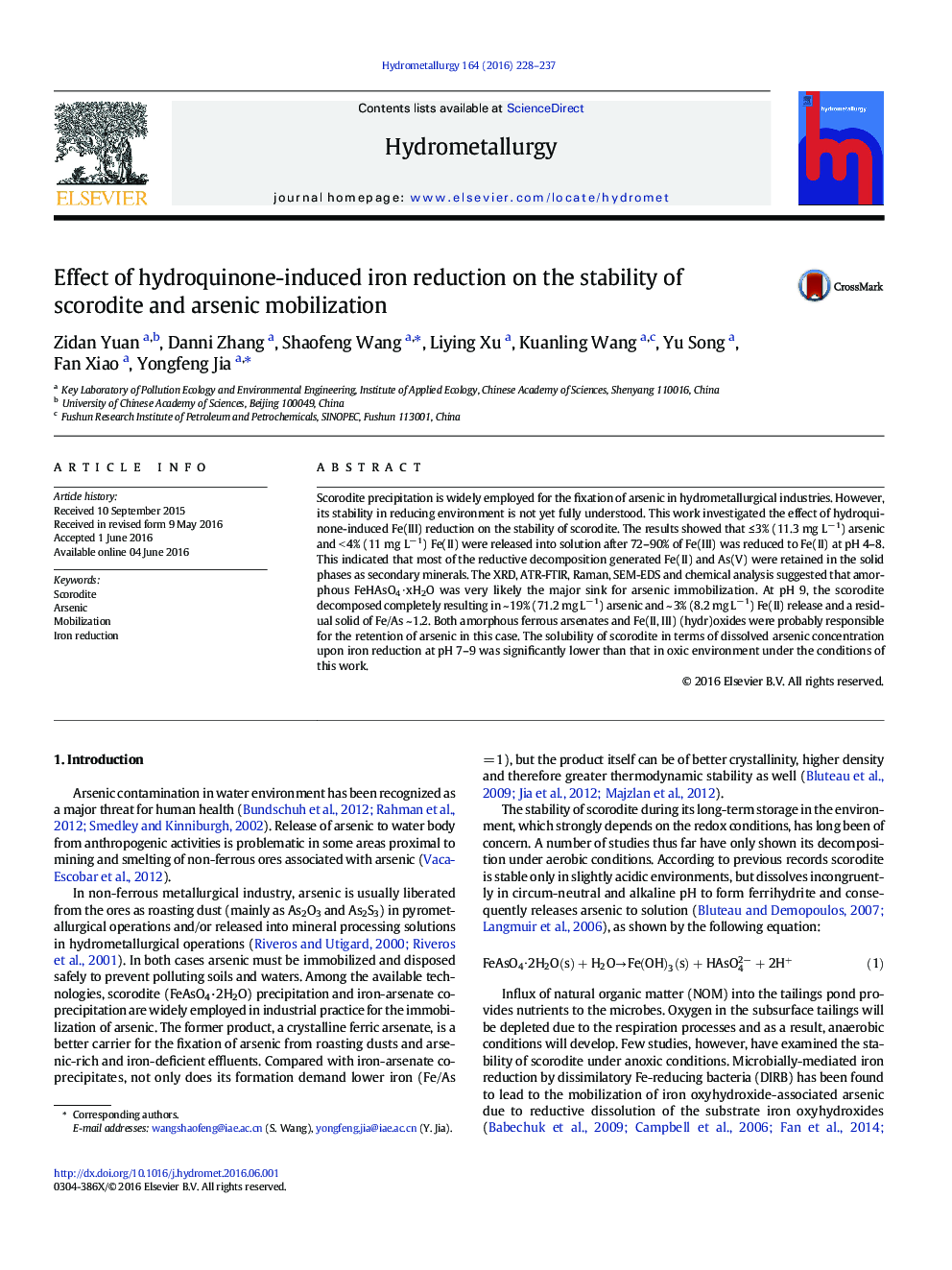| کد مقاله | کد نشریه | سال انتشار | مقاله انگلیسی | نسخه تمام متن |
|---|---|---|---|---|
| 6659197 | 462019 | 2016 | 10 صفحه PDF | دانلود رایگان |
عنوان انگلیسی مقاله ISI
Effect of hydroquinone-induced iron reduction on the stability of scorodite and arsenic mobilization
ترجمه فارسی عنوان
اثر کاهش آهن ناشی از هیدروکینون بر میزان ثبات اسورودیت و جذب آرسنیک
دانلود مقاله + سفارش ترجمه
دانلود مقاله ISI انگلیسی
رایگان برای ایرانیان
موضوعات مرتبط
مهندسی و علوم پایه
مهندسی شیمی
مهندسی شیمی (عمومی)
چکیده انگلیسی
Scorodite precipitation is widely employed for the fixation of arsenic in hydrometallurgical industries. However, its stability in reducing environment is not yet fully understood. This work investigated the effect of hydroquinone-induced Fe(III) reduction on the stability of scorodite. The results showed that â¤Â 3% (11.3 mg Lâ 1) arsenic and < 4% (11 mg Lâ 1) Fe(II) were released into solution after 72-90% of Fe(III) was reduced to Fe(II) at pH 4-8. This indicated that most of the reductive decomposition generated Fe(II) and As(V) were retained in the solid phases as secondary minerals. The XRD, ATR-FTIR, Raman, SEM-EDS and chemical analysis suggested that amorphous FeHAsO4 â
 xH2O was very likely the major sink for arsenic immobilization. At pH 9, the scorodite decomposed completely resulting in ~ 19% (71.2 mg Lâ 1) arsenic and ~ 3% (8.2 mg Lâ 1) Fe(II) release and a residual solid of Fe/As ~ 1.2. Both amorphous ferrous arsenates and Fe(II, III) (hydr)oxides were probably responsible for the retention of arsenic in this case. The solubility of scorodite in terms of dissolved arsenic concentration upon iron reduction at pH 7-9 was significantly lower than that in oxic environment under the conditions of this work.
ناشر
Database: Elsevier - ScienceDirect (ساینس دایرکت)
Journal: Hydrometallurgy - Volume 164, September 2016, Pages 228-237
Journal: Hydrometallurgy - Volume 164, September 2016, Pages 228-237
نویسندگان
Zidan Yuan, Danni Zhang, Shaofeng Wang, Liying Xu, Kuanling Wang, Yu Song, Fan Xiao, Yongfeng Jia,
